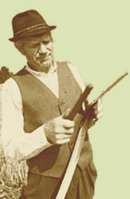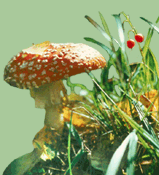Sustainable use of water secures the future
Arvo Järvet and Rein Perens give an overview of the use of household consumption water in Estonia and elsewhere. In many areas, water of good quality and enough amounts has become a sole value. The issues of water were drawn to the international agendas only in the second half of the 20th century. Whatever the economic, social and political status of people, an average person uses at least 50 liters of water a day (however, in some countries less than 10 liters a day). In Estonia, the use of everyday water is not high compared to most Europe countries: 100 liters a day compared to the 214 liters of the Finns. Most Estonian household consumption water comes from groundwater. The article also lists the groundwater layers.
Essay: Is a good nature photograph better than Nature itself? By Ott Luuk
Eesti Loodus enquires
Antti Tooming explains the objectives of this years investments of water management.
Can our drinking water harm health?
Astrid Saava and Ene Indermitte take a look into the chemical composition of the local drinking water. In addition to chemical elements, water can carry microbes causing illness. Most important chemical elements, the content of which should be regularly monitored are fluorine, boron, nitrates, barium, iron and manganese. The article looks at different health risks caused by these elements, and brings forward the regions and locations of Estonia which are threatened by overdoses of such elements.
The condition of ground- and surface water on nitrate-sensitive area
Madis Metsur and Tiiu Valdmaa describe potential threats caused by agricultural activities on the water of the Pandivere and Adavere-Põltsamaa area. These areas have the best soils in Estonia and are therefore highly cultivated, but the ground is very sensitive towards any kind of pollution, mostly because of the karst phenomenon and the very thin Quaternary cover.
Is it going to flood in Tartu this spring?
Arvo Järvets forecast for Tartu. Flooding is influenced by a number of factors, and their coeffect. The author explains the mechanisms causing floods on the example of the Emajõgi River. Comparing the spring of 2005 to the analogue year of 1999, he suggests that it is not going to flood in Tartu this year.
European rarities in Estonia: Pasque-Flower
Rein Kalamaees introduces the rarer, but also the more attractive species of our two Pulsatilla species: the Pasque-Flower Pulsatilla patens. It is a lovely spring flower, an inhabitant of light pine forests.
Interview: Estonia is known for the Silurian fish and their researcher.
Toomas Kukk has interviwed Tiiu Märss, a paleontologist.
Vikor Masing 80
Martin Zobel and Masings other students and colleagues recall the great scientist of the last century. Viktor Masing was a grand teacher, known for his wide interests and enthusiasm for everything.
Tree fields with hybrid aspen: hopes and fears
Arvo Tullus writes about the possible environmental impacts of the fast-growing aspen species. However, the impacts may well appear only after a decade. The impact of the hybrid aspen on the gene fund of the regular aspen is not well-researched in the world. Trees are not planted into a forest, but on a field, and the plantation is not intended to look like a forest, and may therefore seem strange in the landscape. The final conclusions about the suitability of the hybrid aspen for Estonia cannot be made before 20 years from now.
Hallo, spring! 10 years already
Viktor Muuli and Janika Ruusmaa take the children to Nature with the help of the Internet. Hallo, spring! is an Estonian-wide project of spring phenological observations. It relates nature observations with the use of Internet.
Inonotus ulmicola
Sulev Järve warns against Inonotus ulmicola, a fungus that destroys park trees. It attacks mostly older and therefore beautiful trees.
| 

![[IN ENGLISH]](images/gb.gif)





